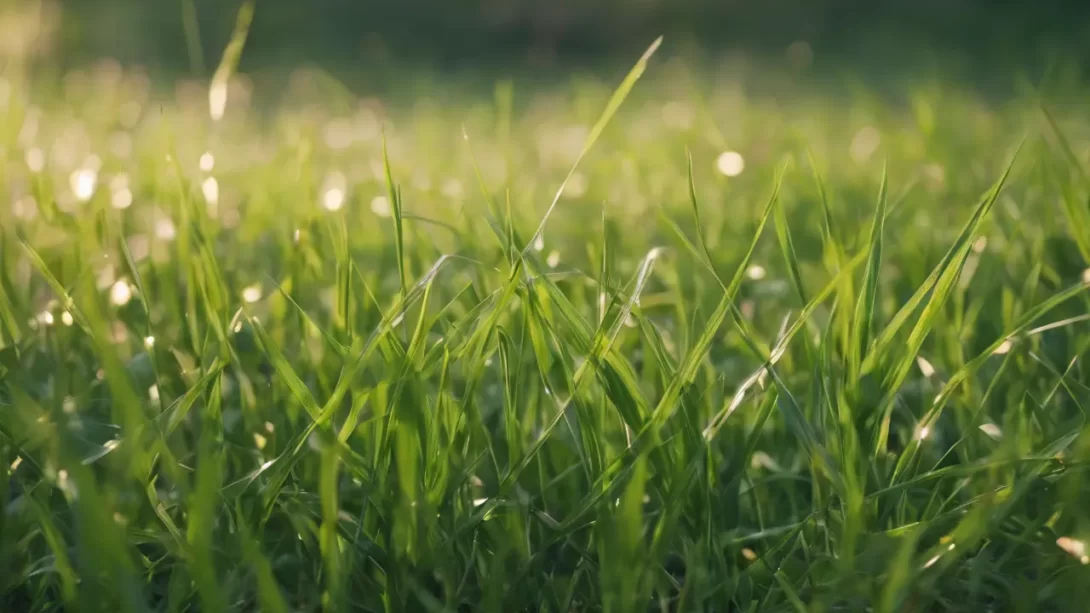St. Augustine grass (Stenotaphrum secundatum), a popular choice for lawns in warmer climates, is often chosen for its thick, carpet-like appearance. However, a common question among homeowners and gardeners is how this grass variety spreads and what its growth habits entail. This article explores the spreading characteristics of St. Augustine grass, providing insights crucial for effective lawn management.
Characteristics of St. Augustine Grass
St. Augustine grass is known for its broad, flat blades and deep green color. It thrives in warm, coastal regions, preferring temperatures that do not dip too low. This grass type is well-suited to sandy soil and exhibits good salt tolerance, making it a common choice in coastal landscapes. Its dense growth habit makes it a popular option for those seeking a lush, full lawn, but it also means that understanding its spreading patterns is essential for proper lawn care.
One of the key features of St. Augustine grass is its ability to establish a thick turf quickly. It is often used in residential and commercial landscapes for its ability to cover ground efficiently. However, this efficiency in spreading can also lead to challenges in maintenance and control, especially in mixed-grass lawns or gardens where precise borders are desired.
Growth Habits of St. Augustine Grass
St. Augustine grass primarily spreads through a network of stolons, or runners. These horizontal stems grow along the surface of the soil and can root at the nodes to form new grass clusters. This method of spreading is known as vegetative or asexual reproduction. Unlike some grasses that can spread through underground rhizomes or seed production, St. Augustine relies heavily on these stolons for expansion.
This growth pattern allows St. Augustine grass to spread quickly and efficiently over the surface, creating a dense mat of grass. This is especially noticeable in favorable conditions where it receives ample sunlight, water, and nutrients. The comparison with other grass types, like Bermuda grass or Kentucky bluegrass, highlights its unique spreading mechanism. While Bermuda grass also uses stolons, it additionally spreads through rhizomes, giving it a different growth dynamic. In contrast, St. Augustine’s lack of rhizome growth means it spreads exclusively above ground, which has implications for how it’s managed and controlled in a lawn setting.
Factors Influencing the Spread of St. Augustine Grass
The spreading rate and overall health of St. Augustine grass are significantly influenced by a range of environmental factors. Sunlight is crucial; this grass variety generally requires at least four to six hours of direct sunlight daily to maintain its vigor. Inadequate sunlight can lead to thinner growth, reducing its spread and leaving space for weeds to establish.
Water and soil quality are equally important. St. Augustine grass prefers consistent moisture and well-drained soil. While it is relatively drought-tolerant once established, prolonged dry spells can weaken it, slowing its spread and potentially causing damage. Regular, deep watering is recommended to promote a healthy, spreading lawn. Soil fertility also plays a role; soils rich in organic matter with balanced pH levels support robust growth.
Lawn care practices significantly impact the spreading ability of St. Augustine grass. Mowing at the correct height is critical; too short can stress the grass, while too long can hinder its horizontal spreading. Fertilization is another key aspect. The right balance of nutrients, particularly nitrogen, encourages vigorous growth. However, over-fertilization can lead to problems like thatch buildup and increased susceptibility to pests and diseases.
Methods to Encourage Spreading
To encourage healthy growth and spreading of St. Augustine grass, several best practices should be followed. Regular mowing, with the blade set to the recommended height for this grass type, helps promote lateral growth and denser turf. It’s important not to remove more than one-third of the grass blade in a single mowing session to avoid stressing the grass.
Watering should be done deeply and infrequently to encourage root growth, which supports healthier and more expansive turf. The ideal watering schedule depends on climate, soil type, and rainfall, but generally, the goal is to keep the soil consistently moist to a depth of several inches.
Fertilization should be based on soil testing and specific nutrient needs of the lawn. A balanced, slow-release fertilizer applied during the growing season can provide the necessary nutrients without the risk of overfeeding. It’s crucial to follow the manufacturer’s instructions and local guidelines to avoid nutrient runoff and environmental impact.
Addressing common problems like pests, diseases, and patchy growth is also essential for a spreading lawn. Regular monitoring, timely interventions, and following integrated pest management practices can mitigate these issues. Aeration and dethatching, as needed, can improve soil health and promote better water and nutrient uptake, further supporting the grass’s spreading and growth.
Limiting the Spread of St. Augustine Grass
While encouraging the spread of St. Augustine grass is often a priority, controlling its growth is equally important, especially in landscaped gardens where it can encroach on flower beds or other grass areas. One effective way to control its spread is by installing physical barriers. These can be underground edging materials that prevent the stolons from crossing into undesired areas. Regularly trimming the edges of the lawn can also keep the grass within its designated space.
Chemical controls, such as selective herbicides, can be used to manage the spread of St. Augustine grass in areas where it’s become invasive. However, it’s vital to use these products judiciously, adhering to guidelines to avoid damaging surrounding plants and minimizing environmental impact. It’s always advisable to consult with a lawn care professional or local extension service for recommendations tailored to your specific situation and location.
Conclusion
St. Augustine grass is a fast-spreading, warm-season turfgrass known for its ability to quickly cover ground and create dense lawns. Its spreading is primarily achieved through stolons, making it a robust choice for many homeowners in suitable climates. However, to maintain a healthy and controlled lawn, understanding and managing its growth habits is essential. This involves balancing environmental factors, proper lawn care practices, and interventions to limit its spread where necessary.
Understanding the growth patterns of St. Augustine grass is crucial for achieving a lush, well-maintained lawn. Whether you’re looking to encourage its spread or control its growth, a combination of the right practices and environmental conditions is key. By applying these insights, gardeners and homeowners can enjoy the benefits of this popular grass variety while maintaining the beauty and integrity of their overall landscape.




